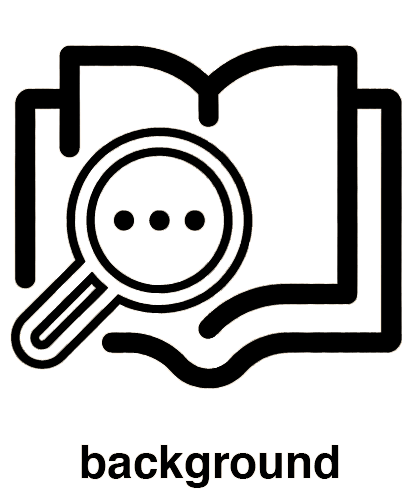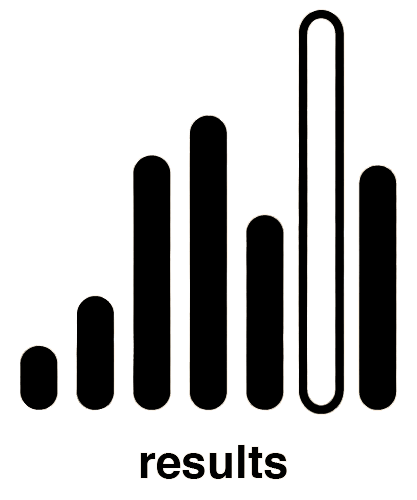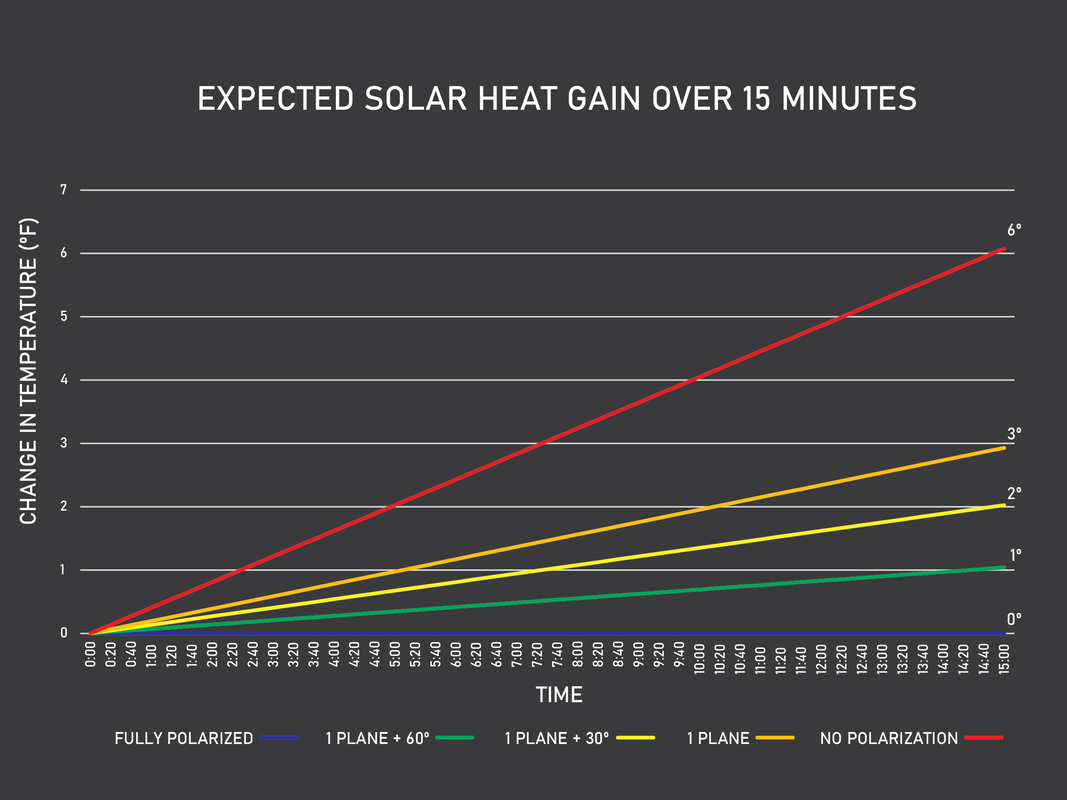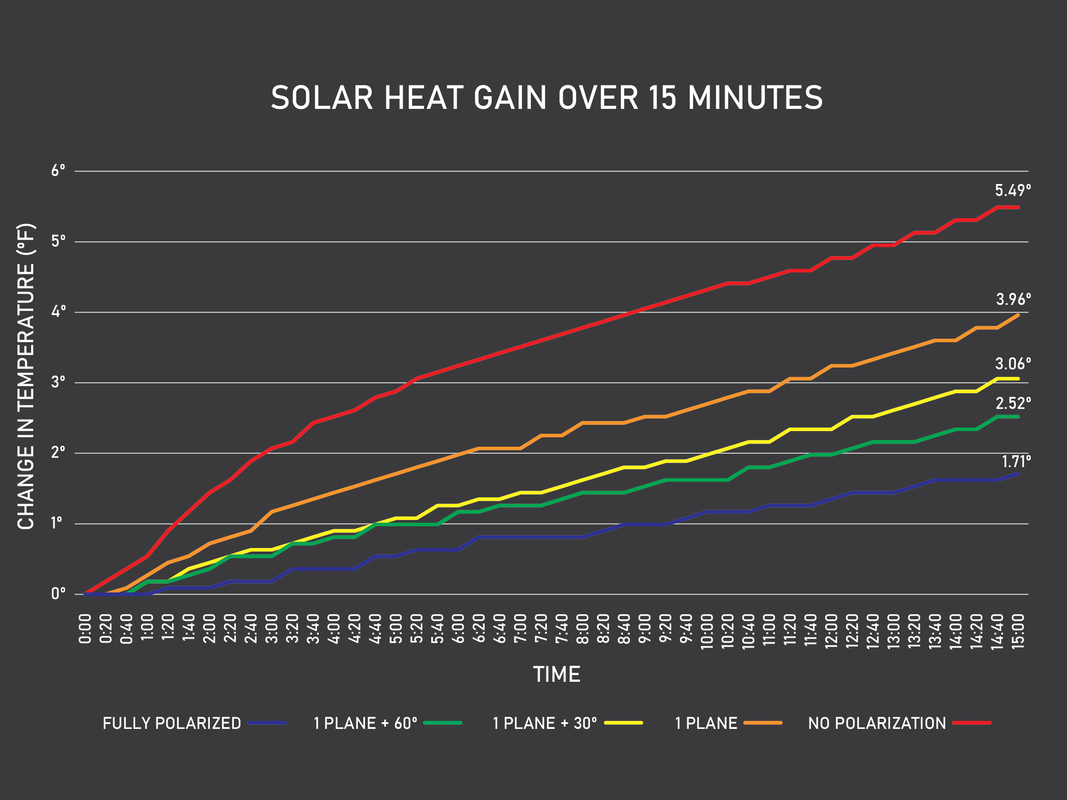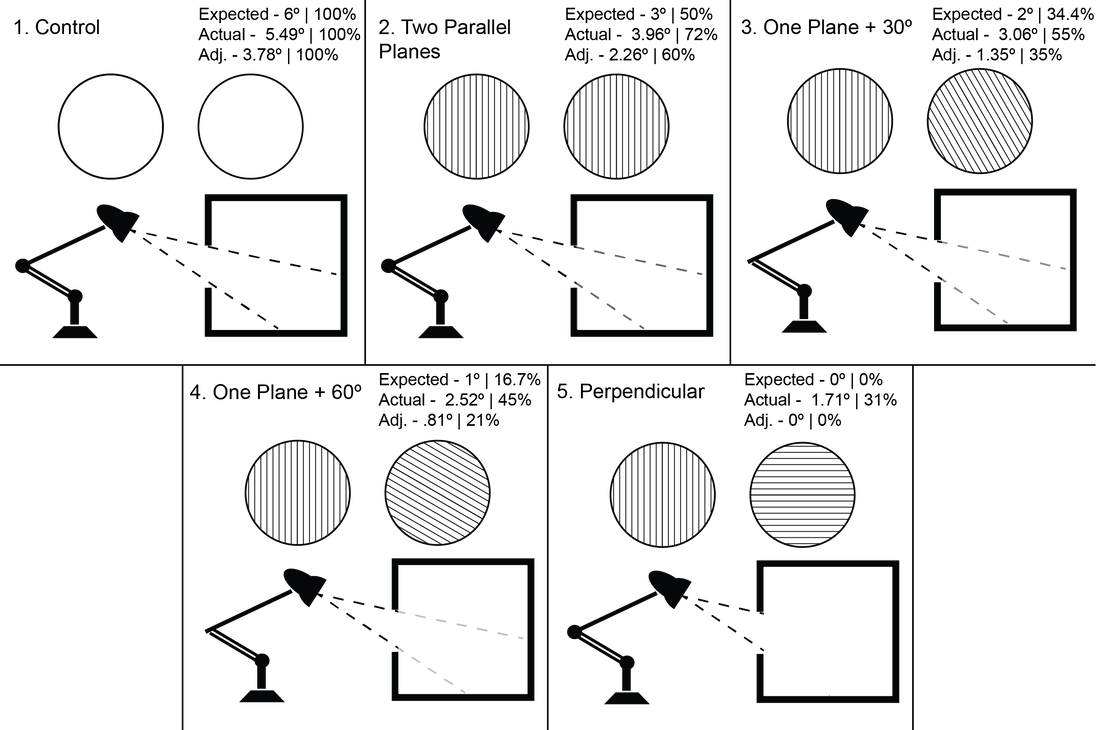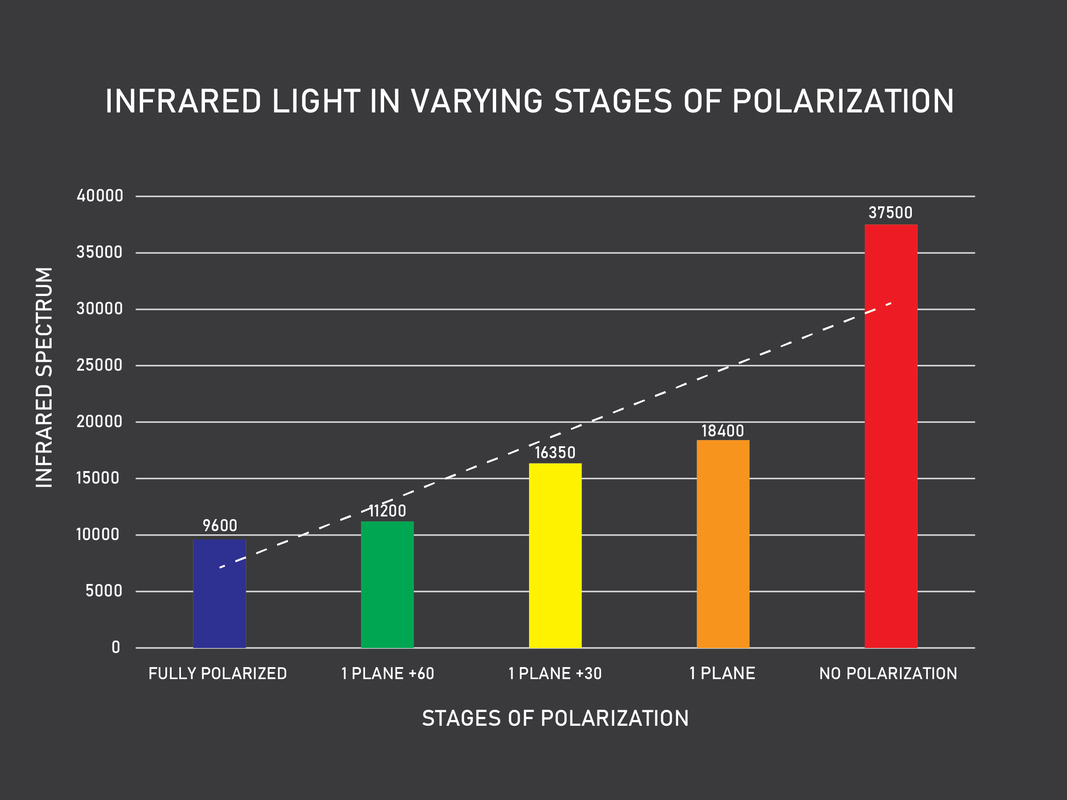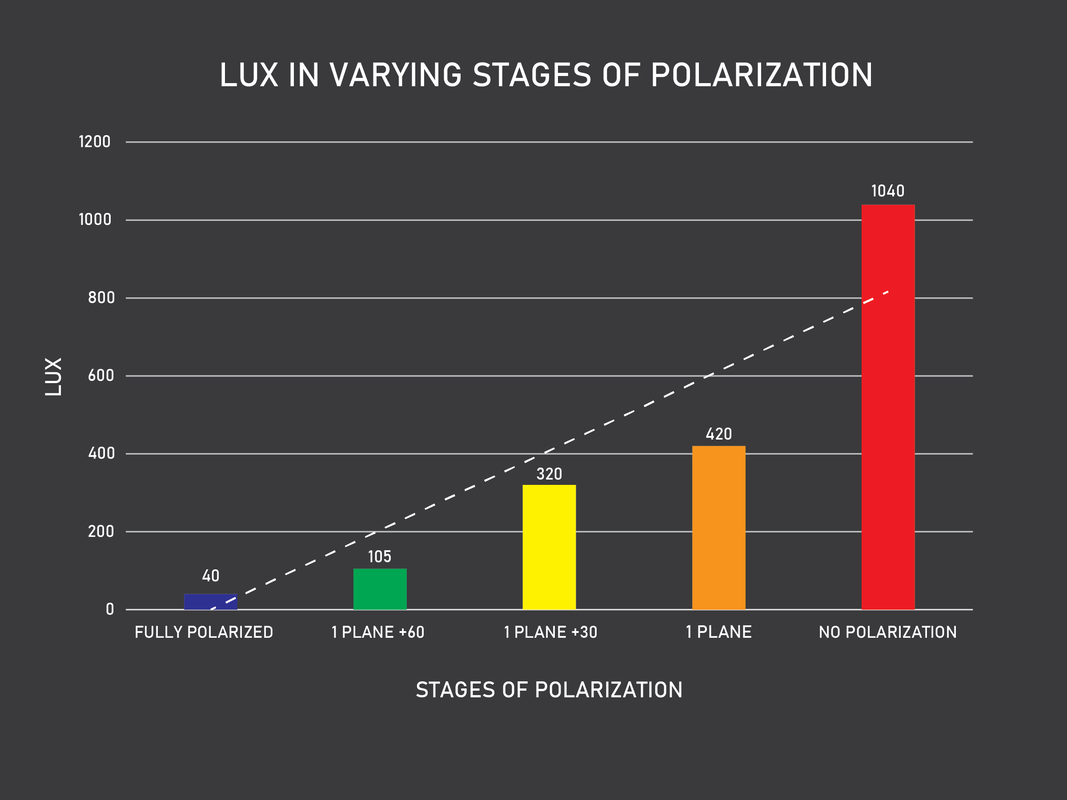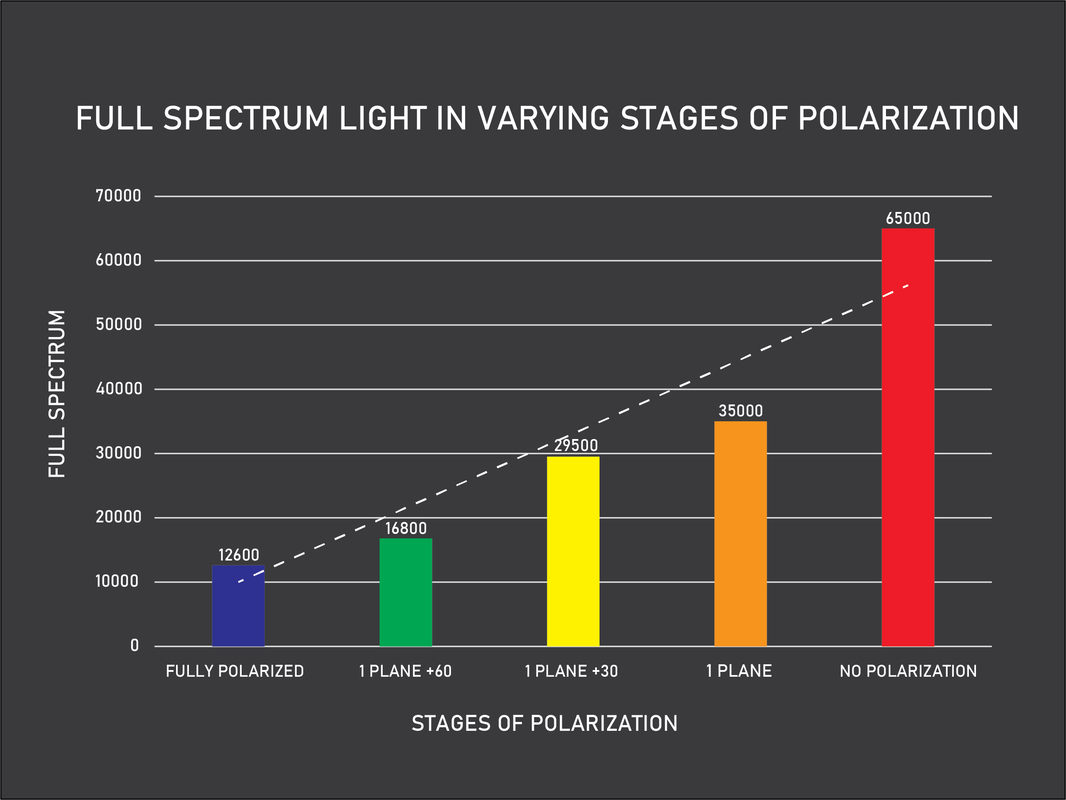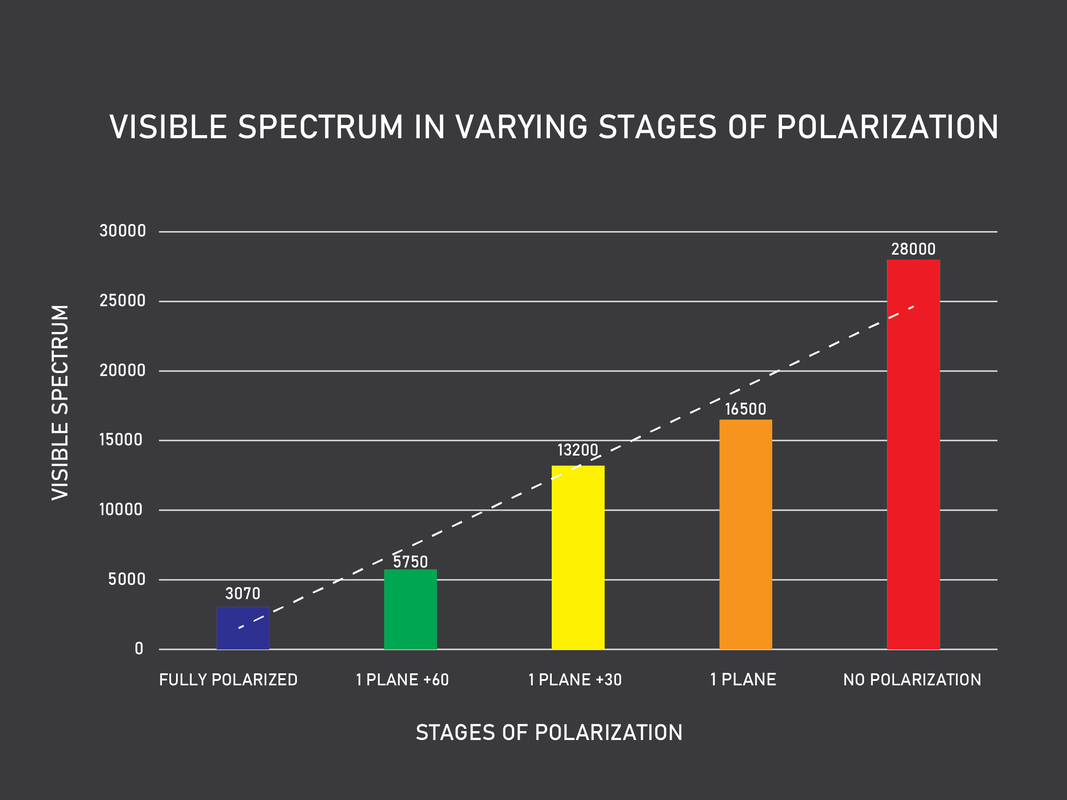Results
My hypothesis was that when polarization was applied to the box it would reduce the control amount by (.555x)+50%, where x is each degree of rotation of the second plane.
Control = 6º
(.555*0) + 50% = 50%
(.5*6) = 3º
(.555*30) + 50% = 66.6%
(.334*6) = 2º
(.555*60) + 50% = 83.3%
(.167*6) = 1º
(.555*90) + 50% = 100%
(0*6) = 0º
These numbers are reflected in the chart below.
Control = 6º
(.555*0) + 50% = 50%
(.5*6) = 3º
(.555*30) + 50% = 66.6%
(.334*6) = 2º
(.555*60) + 50% = 83.3%
(.167*6) = 1º
(.555*90) + 50% = 100%
(0*6) = 0º
These numbers are reflected in the chart below.
Below are the actual measured results of the solar heat gain experiment. The main outlier is the fully polarized number. I predicted that this value would be close to zero, but after testing it was closer to 1.71ºF. However, the rest of the numbers fall close to what my predictions were. There are many factors that may have skewed my data, but I believe the main factor was thermal radiation through the box. If 1.71ºF is taken as the amount of radiation through the box and subtracted from each final value the results are much closer to what my hypothesis.
Shown below is the adjusted data to account for thermal radiation through the box. I believe these numbers are a better representation of how polarization affects solar heat gain. Of course, this is hypothetical and a better testing set-up, that mitigates radiation through the box, could prove this.
The four graphs shown below are measurements for the intensity of infrared, lux, full spectrum, and visible spectrum light that entered the box. This data was as expected, especially the trend line. The main exception to note are the infrared and full spectrum figures, as they were not as effectively filtered through via polarization. The most interesting bars to look at the two on the right, as adding just one plane of polarization drops by about half.
Conclusion
Overall the experiment was a success. It demonstrated that polarization can be utilized a passive, non-intrusive shading device. Though, it should be considered that as polarization is increased visibility is decreased. Another possible flaw of the testing was the ambient temperature the box was allowed to reach. If the box was still gaining temperature as thermal energy was being released from the box it may have skewed the numbers.
Moving forward a better assembly could be constructed that would decrease interference of thermal radiation through the box. Also, things like responsive shading with a servo motor rotating the second plane could be explored. This experiment could also be scaled up to see if the results would be similar.
Moving forward a better assembly could be constructed that would decrease interference of thermal radiation through the box. Also, things like responsive shading with a servo motor rotating the second plane could be explored. This experiment could also be scaled up to see if the results would be similar.

